
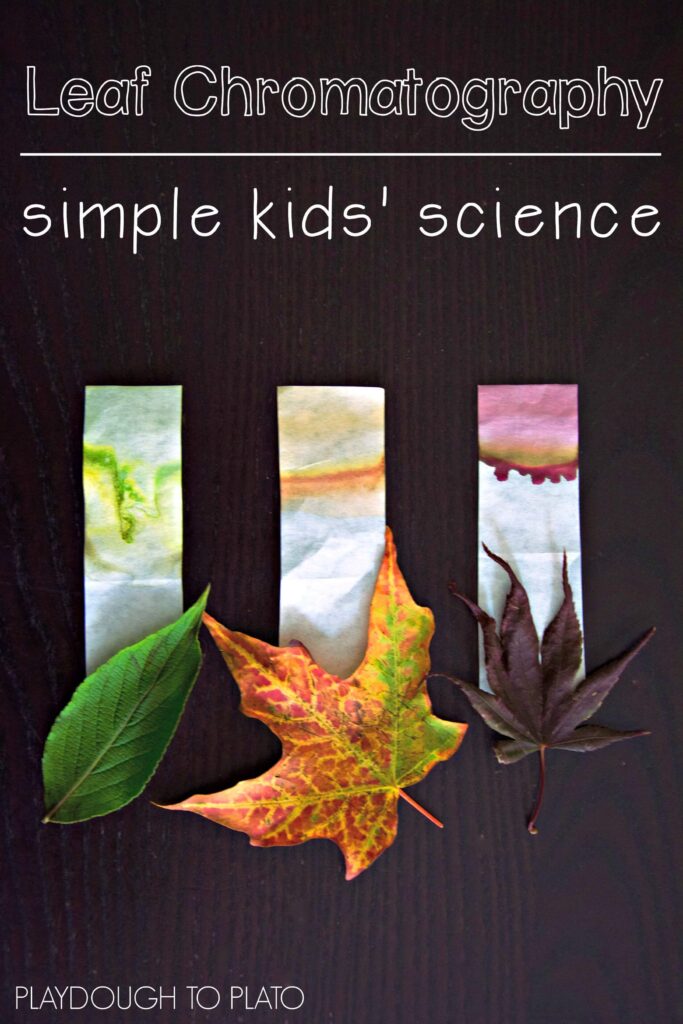
Getting Ready
For this science experiment, I grabbed just a few common household supplies:
- Glasses or jars (one for each leaf color)
- Mortar and pestle (or a spoon)
- Isopropyl alcohol (rubbing alcohol)
- White coffee filters
- Leaves
My kids and I grabbed a couple leaves that had already changed color as well as a few green leaves. My 5 year old really wanted to test all the various colors of leaves so we decided to collect red, orange, yellow, green, and purple.
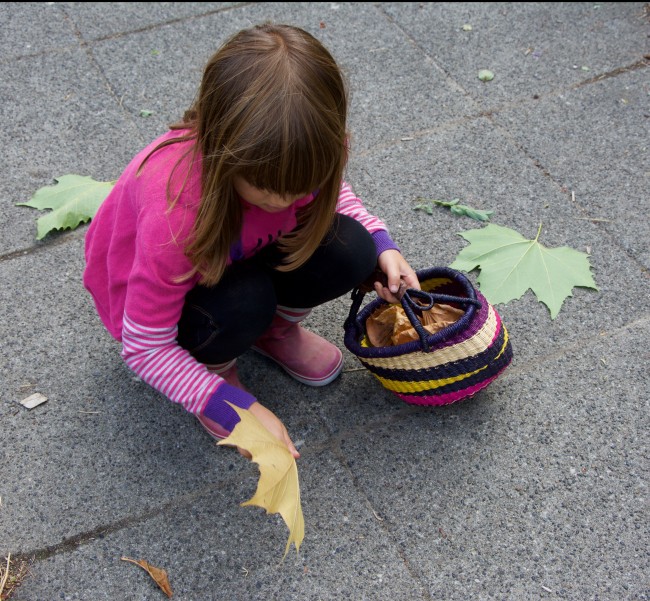
Once she had a basket full she sorted them by color and chose the best leaf from each group to test. I couldn’t resist a shot of all the leaves sorted, simply gorgeous!
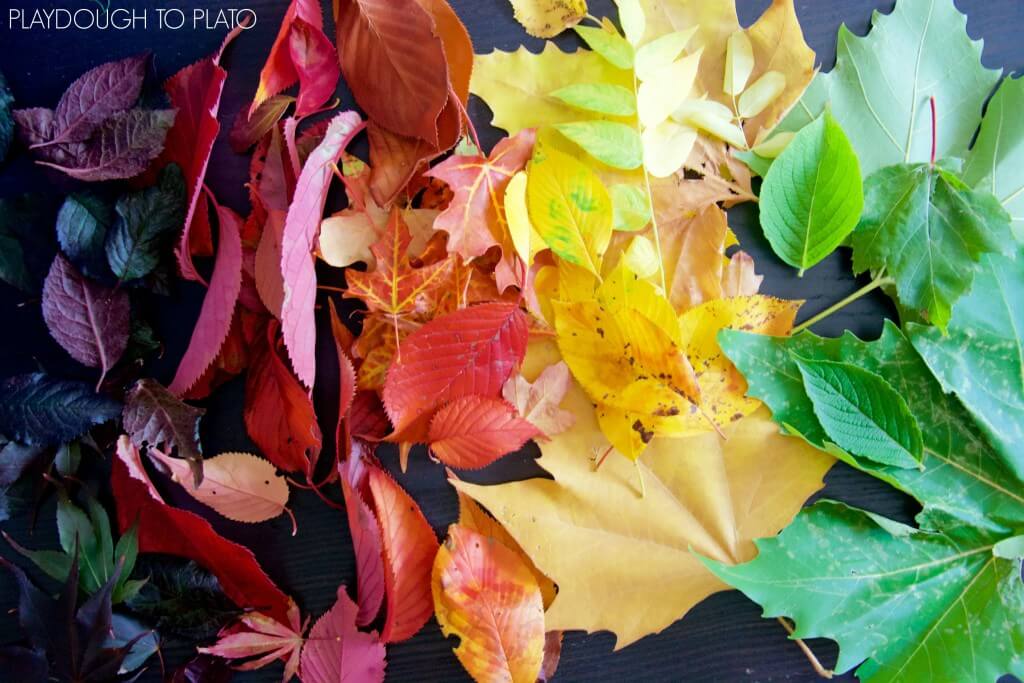
Leaf Chromatography
We decided to start with the green leaf. My daughter, A, tore up the leaf, placed it into a mortar, and crushed the bits up to release their juices with a pestle. (If you don’t have a mortar and pestle place your leaf bits into a glass and crush them with the back of a spoon.)
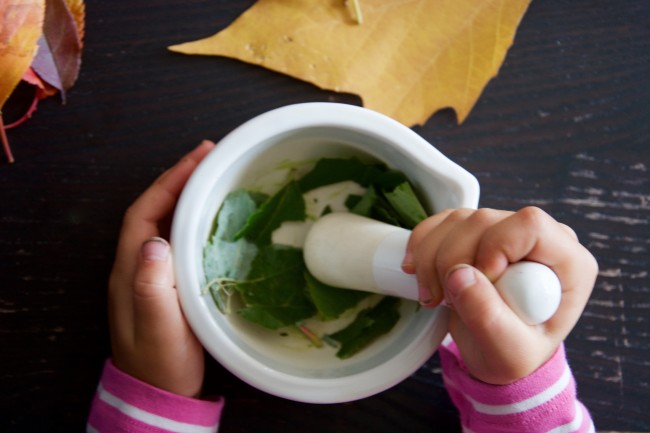
Once she was done crushing the leaf bits, A placed them into a glass and repeated the process with all the other colored leaves.
As A finished smashing bits of the various colored leaves, I labeled each glass by taping on a matching leaf to the back of the glass so we could remember what it looked like.
Now came the stinky part of the experiment! A carefully poured a couple tablespoons of rubbing alcohol into each glass until the crushed leaf bits were covered.
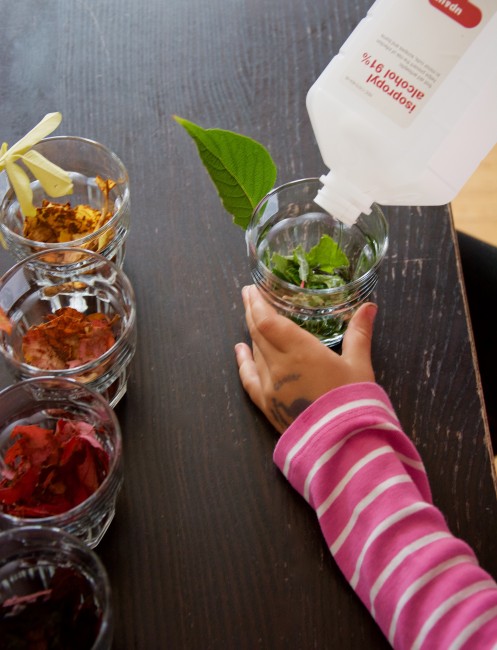
Next, I placed the glasses in Pyrex dishes and poured boiling water around (not in!) the glasses to warm up the alcohol. By warming the rubbing alcohol, we sped up the process of drawing the pigments out of the leaves. You can also cover the glasses with plastic wrap and wait overnight for the pigments to dissolve in the alcohol.
After about 30 minutes, we could see the leaves’ pigments had colored the alcohol.
I cut 1 inch by 5 inch strips from white coffee filters to use as our chromatography paper. I showed A how to place one end in the solvent (alcohol) and drape the other over the edge of the Pyrex. After A placed one strip in each glass, all we had to do was wait. We ended up starting this experiment in the afternoon so we just left it overnight, but an hour or two is usually enough time.
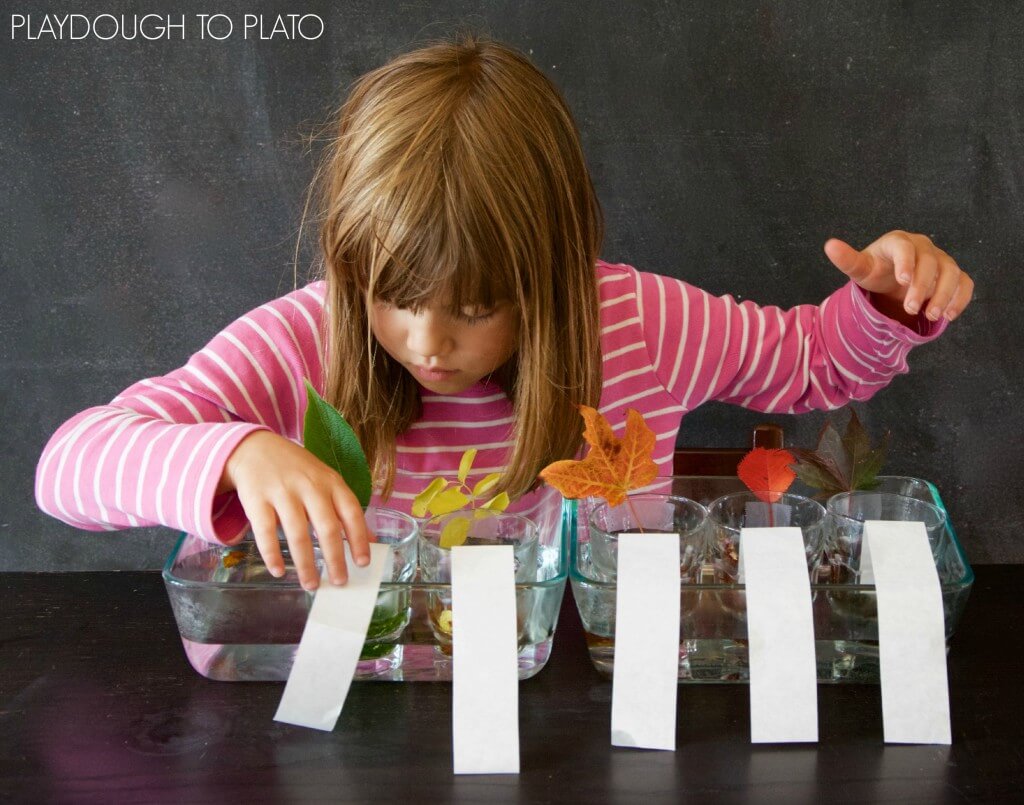
In the morning, we pulled out the filter strips to see what had happened.
The alcohol had carried the pigments from the leaves up the paper and separated them into bands. The purple and orange had the most dramatic bands. You could even see the two different kinds of chlorophyl on the paper from the green leaf. This experiment was so much fun we plan to do it again using a single leaf with multiple colors to see what pigments we can separate.
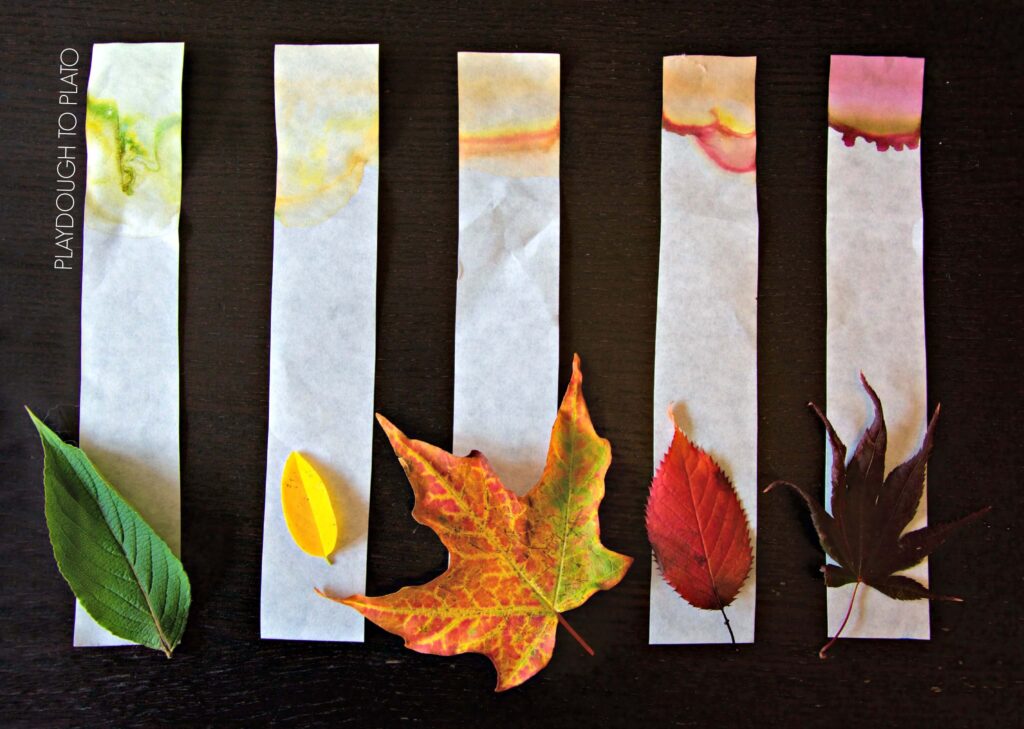
The Science Behind It
Photosynthesis is the process in which plants convert light energy from the sun to chemical food energy. To absorb the light, leaves use brightly colored pigments with chlorophyll being the most important one.
There are two main types of chlorophyll: chlorophyll A which is bluish-green, and chlorophyll B, which is yellowish-green. During most of the growing season, leaves contain more chlorophyll than any other pigment, making them appear green.
In the fall, chlorophyll begins to break down, and the other pigments, which have been there all along, are finally revealed. Yellow leaves have pigments called xanthophyll, orange leaves have a pigment called carotenoids. Anthocyanins, give leaves their intense red and purple pigments.
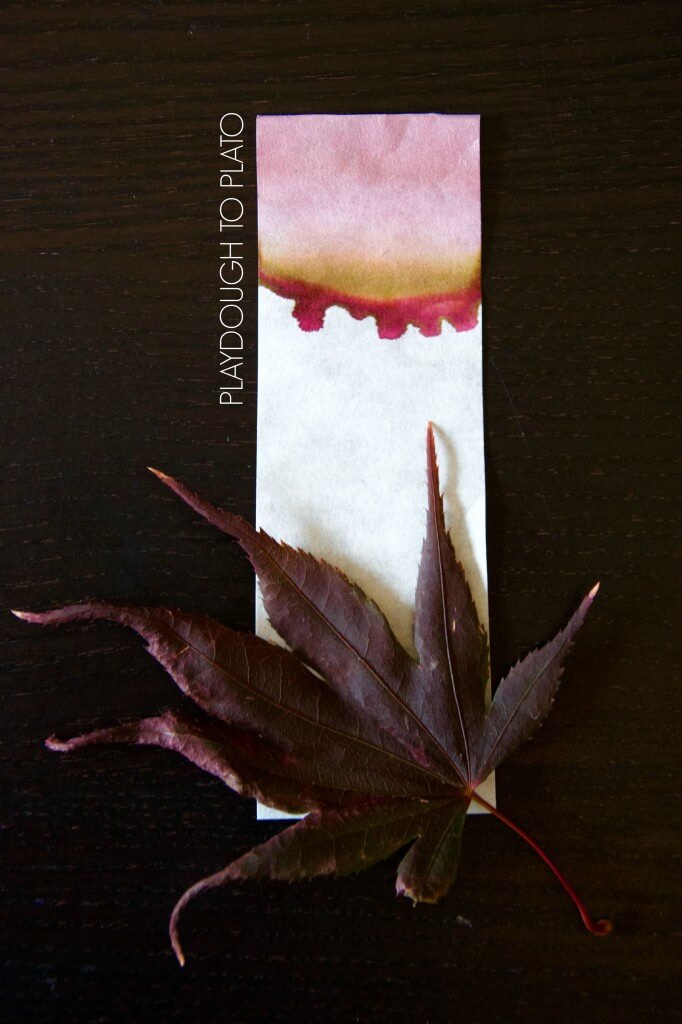
These pigments, however, aren’t present in the leaves during the summer and are only made toward the end of summer.
Chromatography, is the separation of a dissolved mixture by passing a through filter paper through which different parts of the mixture will move at different rates. The pigments that were more soluble in the solvent (alcohol) moved further up the paper than the less soluble pigments. Using the green leaf as an example, the blueish-green chlorophyll A was less soluble than the yellowish green chlorophyll B and thus it didn’t move as far up the paper.
Jaw Dropping Science
For more scientific inspiration, grab a copy of our Super Cool Science Kit packed with 30 jaw dropping experiments that use just a few common household ingredients.
Original article and pictures take http://www.playdoughtoplato.com/leaf-chromatography/ site
Комментариев нет:
Отправить комментарий